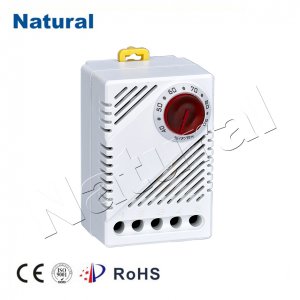Introduction

In the world of modern technology, two devices play a crucial role in maintaining comfortable indoor environments: thermostats and hygrostats. These devices might seem inconspicuous, but they have a significant impact on our daily lives by controlling temperature and humidity levels in various settings. This article delves into the functions, benefits, and importance of thermostats and hygrostats in creating optimal living and working conditions. Thermostats: Regulating Comfort Thermostats are electronic devices designed to monitor and control the temperature within a confined space, such as a home, office, or industrial facility. They serve as the interface between occupants and the heating, ventilation, and air conditioning (HVAC) systems. Modern thermostats offer a wide range of functionalities, from basic temperature adjustment to advanced programmable features. One of the primary benefits of thermostats is energy efficiency. Programmable thermostats allow users to set specific temperature ranges for different times of the day. This feature helps reduce energy consumption by adjusting the HVAC system’s operation based on occupancy patterns. For instance, a programmable thermostat can be set to lower the temperature during nighttime hours or when the building is unoccupied, thereby saving energy and reducing utility bills. Moreover, the rise of smart thermostats has revolutionized the way we control indoor climates. These devices can be connected to the internet and controlled remotely through smartphones or voice assistants. This connectivity not only enhances convenience but also enables more precise control over energy usage, as users can adjust settings even when they are away from home. Hygrostats: Balancing Humidity Hygrostats, on the other hand, are devices that monitor and control humidity levels in indoor spaces. Humidity plays a vital role in our comfort and well-being. Excessive humidity can lead to mold growth, discomfort, and health issues, while low humidity can cause dry skin, respiratory problems, and even damage to wooden furniture. Hygrostats work in conjunction with humidifiers and dehumidifiers to maintain an optimal humidity range. When the humidity level deviates from the desired range, the hygrostat signals the HVAC system to activate the appropriate equipment to restore balance. In this way, hygrostats contribute to a healthier and more comfortable indoor environment. Importance in Various Settings The significance of thermostats and hygrostats extends beyond individual comfort. In commercial and industrial settings, proper temperature and humidity control are crucial for product quality and process stability. For example, in pharmaceutical manufacturing, specific temperature and humidity conditions must be maintained to ensure the effectiveness and shelf life of medications. In data centers, precise temperature and humidity control are essential to prevent equipment overheating and moisture-related damage. Additionally, museums and art galleries rely on these devices to protect valuable artifacts from temperature and humidity fluctuations that could cause deterioration. Conclusion Thermostats and hygrostats might often go unnoticed, but their impact on our daily lives is profound. From enhancing energy efficiency and reducing utility bills to maintaining product quality and preserving cultural heritage, these devices are the unsung heroes of indoor environmental control. As technology continues to advance, we can expect even more sophisticated and interconnected systems that provide us with greater comfort, energy savings, and overall well-being.